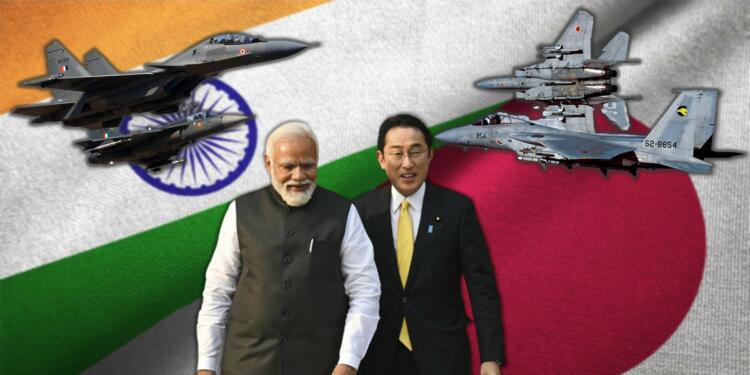Kautilya, in his Mandala theory of statecraft, states that a neighbour is a natural enemy and a neighbour’s neighbour is a natural friend. Although in the modern understanding of the state, it may not be completely correct. But, in India’s case, it is almost true. In a time when India’s security has constantly been threatened by its two hostile neighbours, it becomes imperative to plan a strong security net against the enemies. Working on Kautilya’s theory of statecraft, India is building a strong security architecture around its enemies.
With its String of Pearls strategy, China, over the years, planned a complete encircling policy against India. With the debt trap port capturing diplomacy, China built dual-use ports in India’s neighbourhood. So, to counter modern imperial China, India launched a comprehensive ‘Necklace of Diamonds’ strategy. From the Indian Ocean to Central Asia and the Arabian Sea to the Pacific Ocean, India made a huge counter-push against China. Considering the geostrategic location, Japan becomes a key country in India’s counter encirclement strategy against China. Thus, the strategic relationship with Japan is growing at a relatively fast speed and the recent development cements India’s position.
India-Japan First Fighter Jet Drills
In the second India-Japan 2+2 Foreign and Defence Ministerial Meeting, the countries finally agreed to hold their first fighter jet exercise. The joint statement released by the foreign ministry states that “the Ministers noted with pleasure that the air services of the two countries are working closely for the early conduct of the inaugural India-Japan fighter exercise.”
The statement also highlighted Japan’s participation in the multilateral exercise MILAN. Further, it also appreciated the operationalization of the Agreement Concerning Reciprocal Provision of Supplies and Services between the Self-Defence Forces of Japan and the Indian Armed Forces in the exercise. The Ministers expressed their commitment to continuing bilateral and multilateral exercises including “Dharma Guardian”, JIMEX and “Malabar”.
The decision to conduct fighter exercises was taken in November 2019. To enhance the interoperation capacity and trust building between two air forces, Japan has constantly shown interest in exercising with the Indian Air Force’s Su-30MKI fighter Jets. The plan was to train with an Indian Su-30MKI and American made Japanese F-15s at Komatsu Airbase in June 2020. However, due to the Covid pandemic, the date was extended to July 2021 and the location was changed to Kyakuri Airbase.
Japan’s desperation to exercise with Su-30MKI fighter jets lies in the fact that China also operates the Sukhoi fighter jets and different re-engineered variants of the aircraft. Considering China’s constant aggression in the East China Sea, Japan wants to gain valuable insights about the Sukhoi jets. Knowing its manoeuvrable capacity, cruising range and turnaround times for maintenance can be helpful in any future conflict with China.
Japan-India Bonhomie
The relationship between India and Japan goes back to the 6th century when Buddhism was introduced to Japan. Although, after the nuclear test in 1998, Japan had become hostile towards India. But, now the dangers of the 21st century is once again bringing the two great nations together. Dealing with the common enemy, Japan wants to build a strong military alliance with India. In pursuant to that, since 2014, India and Japan have signed numerous interoperable security pacts to enhance military cooperation.
The recently signed various strategic cooperation deals include: –
- Agreement between the Government of Japan and the Government of the Republic of India Concerning the Transfer of Defence Equipment and Technology (2015)
- Agreement between the Government of Japan and the Government of the Republic of India Concerning Security Measures for the Protection of Classified Military Information (2015)
- Agreement between Japan and the Republic of India on Social Security (2016)
- Agreement between the Government of Japan and the Government of the Republic of India for Cooperation in the Peaceful Uses of Nuclear Energy (2017)
- Agreement between the Government of Japan and the Government of the Republic of India Concerning Reciprocal Provision of Supplies and Services between the Self-Defence Forces of Japan and the Indian Armed Forces (2021)
Further, Japan is looking to develop high-end next-generation fighter jets, anti-aircraft guns, and an air defence system. Although the US has been continuously supplying it with state-of-the-art weapon system, the growing Chinese threat has forced Japan to look for self-reliance in its defence requirements. Moreover, reports suggest that despite being one of the biggest buyers of Lockheed Martin F-35 Lightning II stealth fighter jet, Japan is prompting to develop an ‘invincible’ next-generation fighter jet by merging the capabilities of both F-22 Raptor & F-35 Lightning II under the F-3 or F-X fighter program.
According to a report, Japan is further looking to “develop Railguns to intercept hostile missiles using magnetically powered projectiles to counter hypersonic weapons developed by China, North Korea, and Russia.” The Japanese government also plans to allow exports of fighter jets, missiles and other arms to 12 countries, including India. The announced change in stance on arms export policies will pave the way for cooperation in defence manufacturing and will strengthen relations.
China’s tensions with Japan
Due to the aggressive behaviour of China and increasing pressure from North Korea’s growing missile arsenal, Japan is rebuilding its defence forces. As Japan’s military was disbanded after the second world war, in 2013, Shinzo Abe announced a new national security strategy to strengthen its Self-Defence Forces (SDF). Further, in 2018, the Japanese PM announced a ten-year defence plan to cooperate with foreign militaries. Cooperation with India was also a part of it.
Recently, in August, following Nancy Pelosi’s visit to Taiwan, China conducted various ‘precision missile strikes’ of which 5 missiles landed in Japan’s Exclusive Economic Zone. Terming the missile test “a serious threat to Japan’s national security and safety of the Japanese people,” the Japanese Defence Minister heavily criticised China. China and Japan also have years long Senkaku Islands dispute. Further, the historical wars and battles between the two nations have also created strain in relationship.
China’s Aggression in Himalayan, Arabian Sea and Indian Ocean
In consonance with its Belt and Road Initiative (BRI), China is trying to revive the ancient silk route to market its products. And under the veil of business opportunities, it has captured many ports in the region.
Constructions of the Doraleh multipurpose port in Djibouti, Gwadar and Karachi Deepwater port in Pakistan, Hambantota and CICT Terminal in Srilanka, and Kyaukpyu port in Myanmar have already been completed. The goal is to increase its presence on the choke points of major maritime trade routes like the Strait of Mandeb, the Strait of Malacca, the Strait of Hormuz, and the Lombok Strait. Further, following the salami slicing tactics, China is constantly pushing along the LAC in Ladakh, Bhutan and Arunachal sectors.
The Chinese dream
These economic and military policies are aligned with the Chinese great imperial dream. Chinese President Xi Jinping, on various occasions, has spoken about his socio-economic tool to establish China’s hegemony in the world. It is an effort of the Chinese to expand their cultural & physical power. The Chinese dream is a philosophical slogan around which every Chinese strategy is aligned.
The continuous misadventure in the South China Sea & Himalayan region is part of the Chinese effort to showcase its growing military power. In the current modern state, when everybody is aligning with the modern civilized principles in foreign policy, its primitive mindset and imaginary dream are no less than a political tool of Xi Jinping to influence China’s domestic public.
India’s Grand Plan to Counter China
To counter the modern imperial Communist State, India has made two grand strategies. First, the Necklace of Diamonds encircles China completely from the Indian Ocean to Pacific Ocean and Arabian Sea to Central Asia. Second, the Double Fish Hook Strategy to secure the Indian Ocean.
In its strategy, India first made its presence at the chokepoint of the Strait of Malacca. With the India-Singapore Bilateral Agreement, India secured the Indian Navy’s presence at the Changi naval base in Singapore. Further, India is also making strategic alliances with China’s neighbours like Mongolia and Japan. Japan has already become a military ally of India. Moreover, India has also secured strategic access to the Indonesian Sabang port, which forms the choke point of Malacca Strait and the route of about 40% of India’s trade.
Furthermore, India and Seychelles agreed to develop a naval base on the Assumption Island of Seychelles. The military access to the strategic naval base will be critical in ensuring Indian presence in the African continent, as China wants to increase its presence in the region.
- In February 2018, PM Modi’s visit to Oman resulted in the conclusion of a strategic relationship. A Memorandum of Understanding was signed between the two nations which will allow India to use the key Port of Duqm in Oman for military use and logistical support.
- In March 2018, India-France signed a key agreement that will facilitate the two armed forces to receive logistical support, supplies, and services from each other.
- In March 2015, India signed various ‘Memorandum of Understanding’ with Mauritius for the development of ports and other allied activities.
- In June 2020, India signed a Mutual Logistics Support Agreement (MLSA) with Australia. It facilitated reciprocal access to military logistics facilities and improved interoperability between the two nations.
India also signed various agreements with the United States of America for the reciprocal use of resources. The agreements include: –
- The Logistics Support Agreement (LSA)
- Communication Interoperability and Security Memorandum of Agreement (CISMOA)
- Basic Exchange and Cooperation Agreement for Geo-spatial Cooperation (BECA)
- Communications Compatibility and Security Agreement (COMCASA)
India’s strategic alliance with ASEAN countries
In the neighbourhood of China, India is making a huge military alliance. It is pertinent to note that during the ASEAN-India Commemorative Summit in January 2018, the ASEAN nations approached India for the BrahMos and Akash Missiles. Progressing in this direction, many ASEAN countries like Vietnam, Philippines, Indonesia, and Malaysia have approached India for the imports of fighter jets, radars, missile systems and other military hardware
Aligning with the common goal to stop Chinese aggression in the South China Sea, almost every ASEAN country is making a military alliance with India. Also, these deals are an attempt by India to counterbalance the Pakistan-China security nexus.
In the grand strategy of India, China looks completely jammed in the Indo-Pacific. Through the Necklace of Diamonds strategy, India has choked China from every direction. China’s medieval imperialist behaviour has brought every country in region together.
Due to the conditionality of the Second World War Japan was the only country in the region to avoid military alliance. But the geopolitical overhaul has completely changed it. Japan is now desperate to enhance its military alliance and the recent push for a joint air force military drill is proof of it. India-Japan coming together will give sleepless nights to China. This will also complete India’s encirclement of China.
Support TFI:
Support us to strengthen the ‘Right’ ideology of cultural nationalism by purchasing the best quality garments from TFI-STORE.COM































